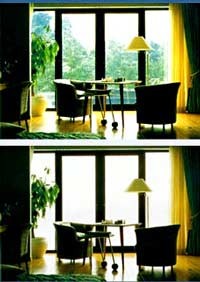 The explosion in “smart” technology have drastically changed the 21st century. From smart phones to smart cars, smart windows have recently came into the market with the potential to significantly reduce energy consumption and more. Switchable glazing technology in smart windows allows windows to change properties such as shading coefficients or visible transmittance in response to electric currents or changes in environmental conditions. Here is an overview of six types of smart windows:
The explosion in “smart” technology have drastically changed the 21st century. From smart phones to smart cars, smart windows have recently came into the market with the potential to significantly reduce energy consumption and more. Switchable glazing technology in smart windows allows windows to change properties such as shading coefficients or visible transmittance in response to electric currents or changes in environmental conditions. Here is an overview of six types of smart windows:
Electrochromic Windows – Electrochromic windows have the ability to change from transparent state to translucent state to opaque state in response to voltage and controls the amount of light and heat passing through.
Photochromic Windows – Photochromic windows have the ability to tint themselves in response to the changes in sunlight intensity and controls the amount of UV glares passing through.
Thermochromic Windows – Thermochromic windows have the ability to change from clear state to diffused state to white and reflective state in response to sunlight intensity and controls the amount of heat passing through.
Liquid Crystal Windows – Liquid crystal windows have has more to do with the ability to change the privacy setting than it does controlling energy efficiency. At a flip of a switch, liquid crystal windows can appear in a transparent state to a opaque state which obscure direct view.
Gasochromic Windows – Gasochromic windows have the ability to change the color of the window in response to hydrogen and oxygen exposure and controls the privacy and glare settings.
Suspended Particle Device Windows – Suspended particle device windows have the ability to tint themselves in response to voltage and controls light, glare and heat transmission by blocking and absorbing sunlight.
Source: http://www.efficientwindows.org/adv_dynamic.php.
By: Paul Doh
